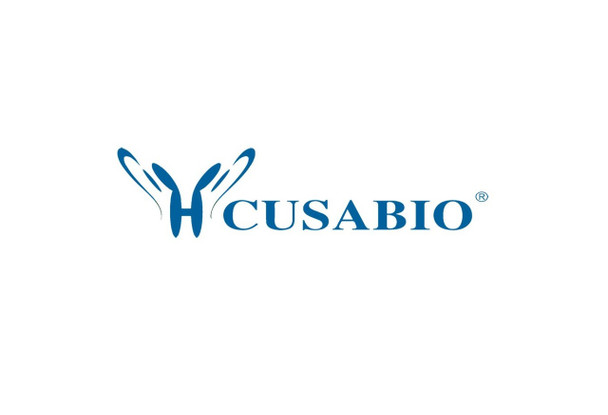Cusabio Active Proteins
Recombinant Human Ephrin-A1 (EFNA1) (Active) | CSB-AP005711HU
- SKU:
- CSB-AP005711HU
- Availability:
- 5 to 10 Working Days
Description
Recombinant Human Ephrin-A1 (EFNA1) (Active) | CSB-AP005711HU | Cusabio
Protein Description: Full Length of Mature Protein
Alternative Name (s) : Ephrin-A1; EPH-Related Receptor Tyrosine Kinase Ligand 1; LERK-1; Immediate Early Response Protein B61; Tumor Necrosis Factor Alpha-Induced Protein 4; TNF Alpha-Induced Protein 4; EFNA1; EPLG1; LERK1; TNFAIP4
Gene Names: EFNA1
Research Areas: Signal Transduction
Species: Homo sapiens (Human)
Source: Mammalian cell
Tag Info: C-terminal Fc-tagged
Expression Region: 19-182aa
Sequence Info: DRHTVFWNSSNPKFRNEDYTIHVQLNDYVDIICPHYEDHSVADAAMEQYILYLVEHEEYQLCQPQSKDQVRWQCNRPSAKHGPEKLSEKFQRFTPFTLGKEFKEGHSYYYISKPIHQHEDRCLRLKVTVSGKITHSPQAHDNPQEKRLAADDPEVRVLHSIGHS
Biological Activity: The ED50 as determined by its ability to bind Human EphA2 in functional ELISA is less than 10 ug/ml.
MW: 46.5 kDa
Purity: Greater than 95% as determined by SDS-PAGE.
Endotoxin: Less than 1.0 EU/µg as determined by LAL method.
Relevance: Ephrin-A1 is a member of the A-type ephrin family of cell surface proteins that function as ligands for the A-type Eph receptor tyrosine kinase family. Ephrin-A1 can be induced by TNF and IL1B. Its expression levels can be down-regulated in primary glioma tissues compared to the normal tissues. The soluble monomeric form is expressed in the glioblastoma multiforme (GBM) and breast cancer cells. Soluble Ephrin-A1 is necessary for the transformation of HeLa and SK-BR3 cells and participates in the relocalization of EPHA2 away from sites of cell-cell contact during transformation. Ephrin-A1 plays an important role in angiogenesis and tumor neovascularization.
PubMed ID:
Notes: Repeated freezing and thawing is not recommended. Store working aliquots at 4℃ for up to one week.
Function: Cell surface GPI-bound ligand for Eph receptors, a family of receptor tyrosine kinases which are crucial for migration, repulsion and adhesion during neuronal, vascular and epithelial development. Binds promiscuously Eph receptors residing on adjacent cells, leading to contact-dependent bidirectional signaling into neighboring cells. Plays an important role in angiogenesis and tumor neovascularization. The recruitment of VAV2, VAV3 and PI3-kinase p85 subunit by phosphorylated EPHA2 is critical for EFNA1-induced RAC1 GTPase activation and vascular endothelial cell migration and assembly. Exerts anti-oncogenic effects in tumor cells through activation and down-regulation of EPHA2. Activates EPHA2 by inducing tyrosine phosphorylation which leads to its internalization and degradation. Acts as a negative regulator in the tumorigenesis of gliomas by down-regulating EPHA2 and FAK. Can evoke collapse of embryonic neuronal growth cone and regulates dendritic spine morphogenesis.
Involvement in disease:
Subcellular Location: Cell membrane, Lipid-anchor, GPI-anchor, SUBCELLULAR LOCATION: Ephrin-A1, secreted form: Secreted
Protein Families: Ephrin family
Tissue Specificity: Brain. Down-regulated in primary glioma tissues compared to the normal tissues. The soluble monomeric form is expressed in the glioblastoma multiforme (GBM) and breast cancer cells (at protein level) .
Paythway: MAPKsignalingpathway
Form: Lyophilized powder
Buffer: Lyophilized from a 0.2 μm filtered 1xPBS, pH 7.4
Reconstitution: We recommend that this vial be briefly centrifuged prior to opening to bring the contents to the bottom. Please reconstitute protein in deionized sterile water to a concentration of 0.1-1.0 mg/mL.We recommend to add 5-50% of glycerol (final concentration) and aliquot for long-term storage at -20℃/-80℃. Our default final concentration of glycerol is 50%. Customers could use it as reference.
Uniprot ID: P20827
Uniprot Entry Name:
HGNC Database Link: HGNC
UniGene Database Link: UniGene
KEGG Database Link: KEGG
STRING Database Link: STRING
OMIM Database Link: OMIM









